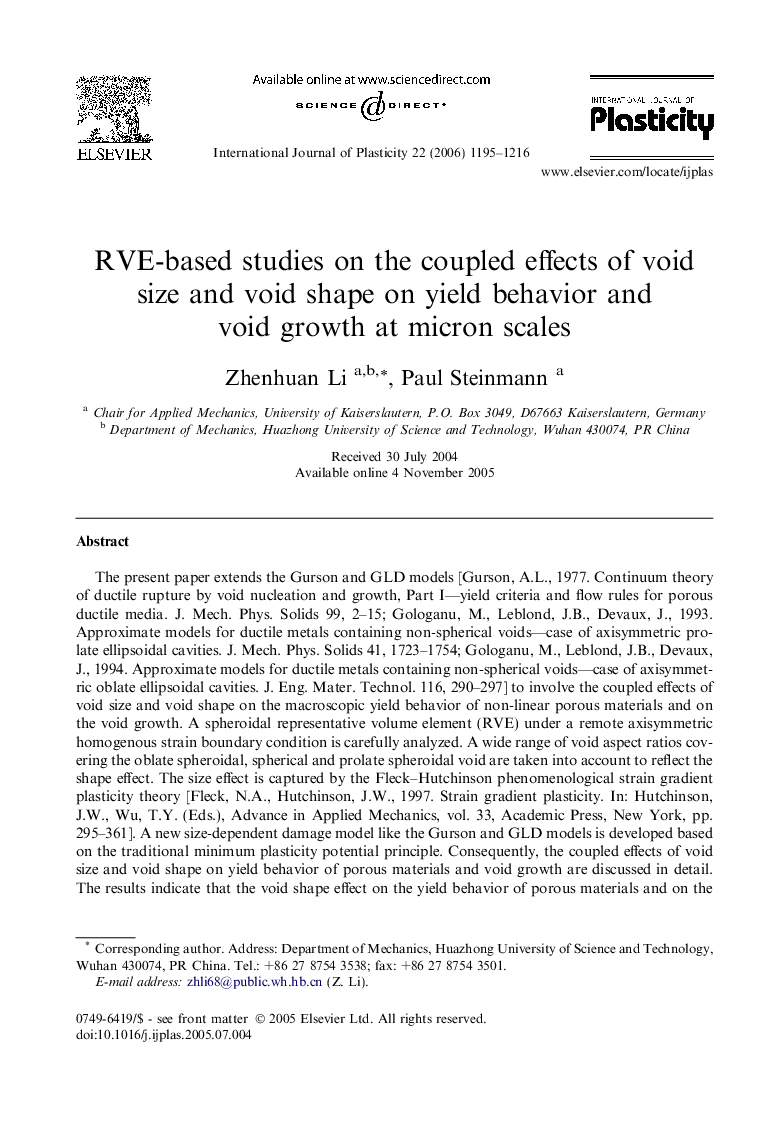| Article ID | Journal | Published Year | Pages | File Type |
|---|---|---|---|---|
| 784676 | International Journal of Plasticity | 2006 | 22 Pages |
The present paper extends the Gurson and GLD models [Gurson, A.L., 1977. Continuum theory of ductile rupture by void nucleation and growth, Part I—yield criteria and flow rules for porous ductile media. J. Mech. Phys. Solids 99, 2–15; Gologanu, M., Leblond, J.B., Devaux, J., 1993. Approximate models for ductile metals containing non-spherical voids—case of axisymmetric prolate ellipsoidal cavities. J. Mech. Phys. Solids 41, 1723–1754; Gologanu, M., Leblond, J.B., Devaux, J., 1994. Approximate models for ductile metals containing non-spherical voids—case of axisymmetric oblate ellipsoidal cavities. J. Eng. Mater. Technol. 116, 290–297] to involve the coupled effects of void size and void shape on the macroscopic yield behavior of non-linear porous materials and on the void growth. A spheroidal representative volume element (RVE) under a remote axisymmetric homogenous strain boundary condition is carefully analyzed. A wide range of void aspect ratios covering the oblate spheroidal, spherical and prolate spheroidal void are taken into account to reflect the shape effect. The size effect is captured by the Fleck–Hutchinson phenomenological strain gradient plasticity theory [Fleck, N.A., Hutchinson, J.W., 1997. Strain gradient plasticity. In: Hutchinson, J.W., Wu, T.Y. (Eds.), Advance in Applied Mechanics, vol. 33, Academic Press, New York, pp. 295–361]. A new size-dependent damage model like the Gurson and GLD models is developed based on the traditional minimum plasticity potential principle. Consequently, the coupled effects of void size and void shape on yield behavior of porous materials and void growth are discussed in detail. The results indicate that the void shape effect on the yield behavior of porous materials and on the void growth can be modified dramatically by the void size effect and vice versa. The applied stress triaxiality plays an important role in these coupled effects. Moreover, there exists a cut-off void radius rc, which depends only on the intrinsic length l1 associated with the stretch strain gradient. Voids of effective radius smaller than the critical radius rc are less susceptible to grow. These findings are helpful to our further understanding to some impenetrable micrographs of the ductile fracture surfaces.
